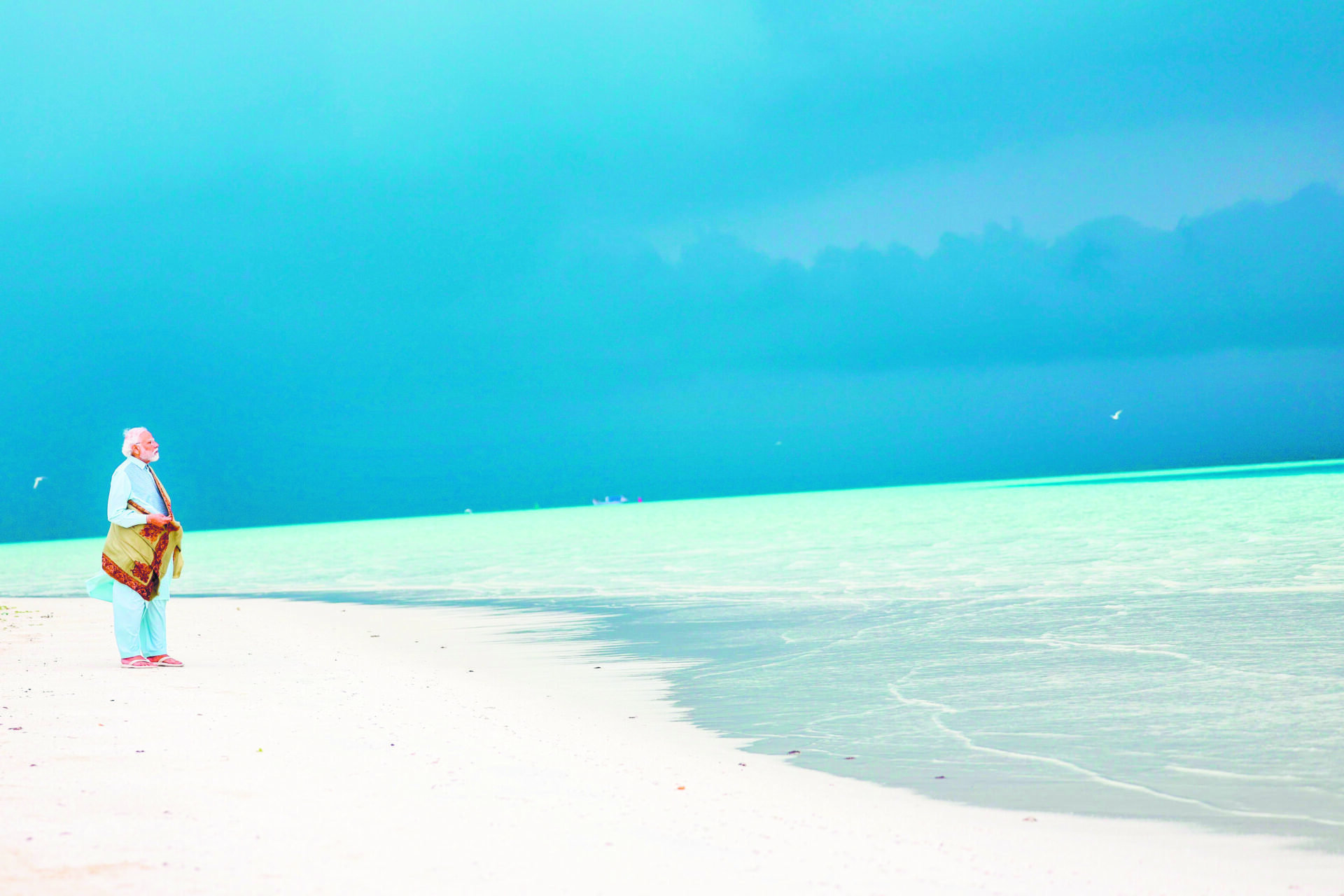Lakshadweep’s restricted areas policy ensures that the delicate ecosystem of the ten inhabited islands remains protected from over-tourism.
India and the Maldives are in an undiplomatic tussle—a row that is was a product of simmering hatred on the part of Maldives. Fortunately, Lakshadweep has been promoted in the process. But can Lakshadweep compete with Maldives and its brand? Can it match its infrastructure and aura?
Lakshadweep is India’s smallest Union Territory, a strategically located archipelago of 36 islands off the southwestern coast of India, with beautiful islands in the Arabian Sea. It holds immense strategic significance for India. With its location in the Indian Ocean Region (IOR), Lakshadweep plays a crucial role in India’s maritime security and defence strategy. The islands serve as a natural barrier, protecting India’s western coast and as a surveillance point for monitoring naval activities in the region. Additionally, the presence of these islands strengthens India’s control over vital sea lanes of communication, ensuring safe passage for trade and oil supplies. Furthermore, these islands serve as a strategic base for Indian naval operations in the Arabian Sea.
Lakshadweep is located close to the Maldives, which is known for its luxury resorts and stunning underwater scenery. Despite its small size, Lakshadweep offers many natural attractions similar to Maldives’, including its beaches, a vibrant marine life, and unique cultural experiences. Lakshadweep and Maldives are geologically and morphologically similar, apart from having similar origin, species and fauna, as well as people who have a religious and Islamic outlook towards the world.
Lakshadweep’s restricted areas policy ensures that the delicate ecosystem of the ten inhabited islands remains protected from over-tourism. This approach allows genuine tourists to experience the region’s beauty while minimising any negative environmental impact.
The airport at Agatti offers helicopter transfers to Kavaratti island.
Lakshadweep has pristine beaches, coral reefs, unique marine biodiversity, and picturesque landscapes. It has all the ingredients to attract travellers from across the globe. But how easy or difficult is it to develop Lakshadweep into a world-class tourist destination? It is not an easy feat and will require careful planning, strategic investments, and a deep understanding of the location’s unique geographical and environmental characteristics. Due to limited infrastructure and connectivity, Lakshadweep has struggled to capitalise on its tourism potential fully.
The government is working to develop the necessary amenities and improve transportation links. Several initiatives have been taken in recent years to attract tourists and improve the islands’ infrastructure. The Ministry of Tourism has been working closely with the local administration to identify and address the challenges faced by the tourism industry in Lakshadweep. Various projects have been implemented to enhance island connectivity, such as introducing regular flights and developing better transportation facilities.
Additionally, efforts have been made to promote eco-tourism and preserve the island’s fragile ecosystem. The government has also encouraged private sector investments in the hospitality industry, establishing regional luxury resorts and hotels. Under the “Lakshadweep Tourism Policy”, various infrastructure projects have been undertaken, including constructing new resorts and enhancing tourist amenities.
However, despite these initiatives, challenges persist, and the government must address them effectively to unlock the full potential of Lakshadweep as a world-class tourist destination.
Both Lakshadweep and the Maldives are small archipelagos. Both rely on tourism as a significant source of income. While the Maldives has successfully established itself as a popular tourist destination, the presence of local jihadists in Lakshadweep, who are in solidarity with the Maldivians, potentially hinders its ability to compete effectively with the Maldives. They may resort to destabilisation, driven by extremist ideologies, posing a significant challenge to the region’s progress. To address this issue, authorities must implement adequate security measures to combat these threats. By doing so, the destination can ensure the safety of its tourists and enhance its reputation as a secure and desirable travel destination.
Some possible government initiatives and policies to promote tourism in Lakshadweep could include investing in sustainable infrastructure, such as eco-friendly accommodations and transportation options, implementing strict regulations to protect the islands’ delicate ecosystems, and collaborating with local communities to develop responsible tourism practices.
Improving the islands’ infrastructure and addressing connectivity issues would be crucial to attracting more tourists to Lakshadweep. This could involve upgrading transportation facilities, such as airports and ports, to ensure smooth travel experiences for visitors. Additionally, investing in reliable internet and communication networks would enhance connectivity and enable tourists to stay connected while exploring the islands. The only way tourism can actually sustain and thrive is by making it high-end and among the most exclusive destinations on the planet.
Preserving the ecological balance and ensuring sustainability in tourism development are essential for the long-term viability of Lakshadweep as a tourist destination. This could involve implementing strict regulations to protect the fragile marine ecosystem, promoting responsible tourism practices, and supporting local communities in adopting sustainable livelihoods.
India can stand out with its experience of managing 13 different types of islands; India can have a 100% eco-centric approach, with bamboo construction.
Additionally, as a new step, each of the atolls can be branded differently in terms of its architecture, cuisine, etc—a new venture the world has not known. India can develop a specific theme-based tourism culture based on the lives of the islanders.
Environmentalists’ and local communities’ concerns are significant because they help preserve the island’s delicate ecosystem. The government needs to find a middle ground that allows for sustainable development while respecting the region’s unique cultural and ecological heritage.
K. Siddhartha is an author, strategic thinker and earth scientist.

